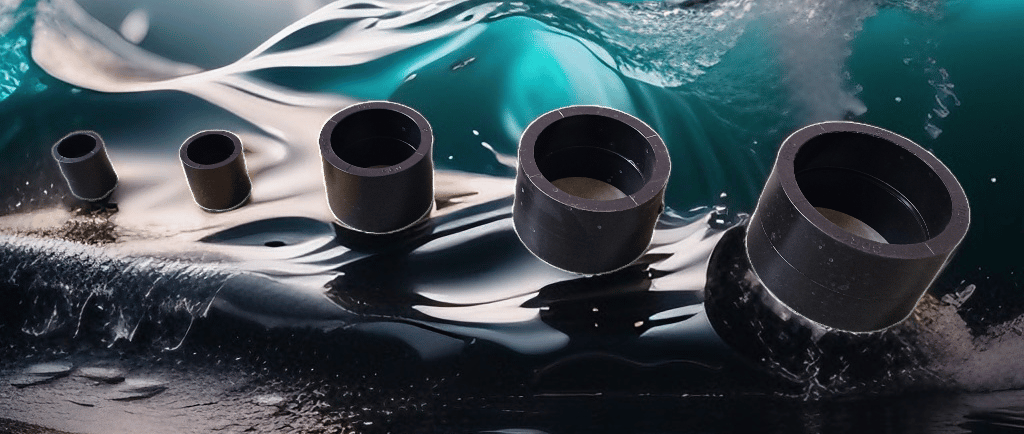Types and Uses of HDPE Butt Fittings
INDUSTRY NEWS
9/9/20244 min read


Introduction to HDPE Butt Fittings
High-Density Polyethylene (HDPE) is a thermoplastic polymer known for its high strength-to-density ratio, which makes it an ideal material for a variety of industrial applications. Among its numerous uses, HDPE butt fittings, commonly employed in piping systems, play a crucial role in ensuring the durability and efficiency of fluid transport.
HDPE butt fittings are specifically designed to be joined through a process known as butt fusion welding. This technique involves heating the pipe ends together and then pressing them until they fuse seamlessly, forming a robust and leak-proof connection. The resultant joint is as strong as the original pipe, which is integral for maintaining the system's integrity.
The exceptional properties of HDPE make it a preferred choice for manufacturing butt fittings. Its resistance to a wide range of chemicals, including acids and solvents, significantly reduces the potential for corrosion and extends the service life of the piping system. Additionally, HDPE is highly durable and can withstand substantial mechanical stress, making it suitable for high-pressure applications.
Another notable characteristic of HDPE butt fittings is their capacity to handle thermal variations without compromising the structural integrity. This thermal resilience ensures that the fittings remain stable under fluctuating temperatures, preventing any deformation or failure of the pipeline.
Moreover, the light weight of HDPE reduces the overall load on the piping system, facilitating easier installation and lowering transportation costs. These attributes, combined with the material's environmental friendliness—being 100% recyclable—underscore its growing preference in industries ranging from water distribution to natural gas conveyance.
In essence, the utilization of HDPE butt fittings, owing to their superior chemical resistance, durability, and mechanical strength, underpins the efficient and reliable operation of modern piping systems. Their role becomes indispensable in applications where reliability and longevity are paramount, thereby illustrating why HDPE stands as a cornerstone material in contemporary engineering solutions.
Different Types of HDPE Butt Fittings
HDPE butt fittings are essential components in the establishment of a high-density polyethylene piping system. Each fitting type plays a unique role in forming robust, leak-proof connections. Among the myriad types available, some key ones are elbows, tees, reducers, and end caps.
Firstly, elbows are instrumental in altering the direction of the pipeline. Available in various angles such as 45, 90, and sometimes 180 degrees, they redirect the flow of contents seamlessly, ensuring smooth transitions without any flow disruptions. Whether it's a water supply system or an industrial fluid transfer line, elbows provide the requisite flexibility.
Tees, on the other hand, are critical when there is a need to branch out from the main line. By allowing one line to split into two or conjoin two lines into one, tees facilitate a multitude of configurations within the system. These fittings ensure that material can be efficiently routed to multiple destinations, optimizing distribution within the network.
Reducers perform the crucial task of connecting pipes of different diameters. By tapering the flow from a larger to a smaller diameter or vice versa, reducers maintain the integrity of the pipeline's pressure while ensuring that the flow rate is adjusted as necessary. This is particularly important in hydraulic systems, where maintaining proper pressure levels is paramount.
Lastly, end caps serve to seal the ends of the pipes, thereby preventing potential leaks and safeguarding the system's integrity. Whether at the point of termination or during maintenance activities, end caps provide an effective closure solution.
Each type of HDPE butt fitting is designed to enhance the functionality and reliability of the piping system, ensuring an efficient and leak-proof infrastructure. When integrated correctly, these fittings can significantly extend the operational life and performance of the pipeline.
```htmlApplications and Advantages of Using HDPE Butt Fittings
HDPE butt fittings are integral components in various industry sectors, primarily due to their robustness and versatility. One of their most common applications is in the water supply industry, where they are used for connecting pipes in municipal water systems. These fittings ensure a secure and leak-proof connection, critical for maintaining the integrity of potable water delivery systems. Case studies from cities like New York and London illustrate how HDPE butt fittings have successfully replaced aging metal pipes, resulting in more reliable and long-lasting water infrastructure.
In addition to water supply, HDPE butt fittings are extensively utilized in gas distribution networks. Their high resistance to corrosion and chemicals makes them ideal for underground gas pipelines, where they contribute to maintaining safety and efficiency. Countries like Germany and Japan have implemented extensive gas pipeline systems using HDPE butt fittings, significantly reducing maintenance costs and improving safety standards.
The sewage and wastewater treatment industries also benefit from the use of HDPE butt fittings. These fittings help in creating robust and durable sewage systems that can withstand harsh conditions and the corrosive nature of wastewater. In industrial fluid handling, HDPE butt fittings are preferred for their ability to handle a wide range of chemicals and temperatures. This makes them suitable for various applications, including in chemical processing plants and oil refineries.
The advantages of using HDPE butt fittings extend beyond their wide application range. They are cost-effective and relatively easy to install, which reduces labor costs and downtime during installation or maintenance. Their resistance to environmental factors like UV radiation, chemicals, and extreme temperatures prolongs their lifespan, providing significant long-term savings. Furthermore, HDPE is a sustainable and eco-friendly material. It is 100% recyclable and contributes to reducing environmental impact by lowering the need for frequent replacements and reducing resource consumption.
Overall, the use of HDPE butt fittings in various industries highlights their effectiveness in providing durable, versatile, and environmentally friendly solutions for fluid and gas distribution systems.
```